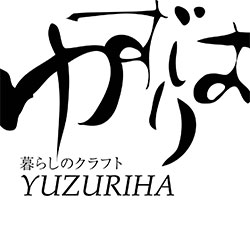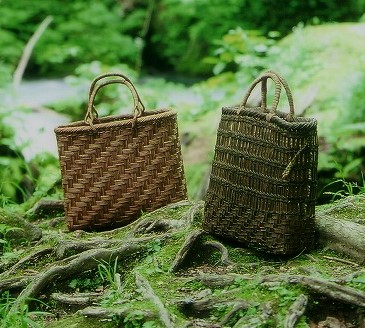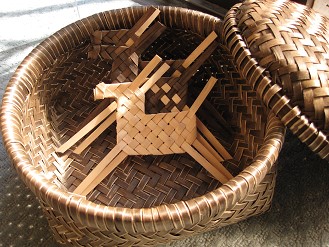BASKET WEAVING
Tohoku District (Aomori, Akita, Iwate, Yamagata, Fukushima, and Miyagi Prefectures)
Materials: Wild grapevine, akebi, walnut, painted maple
The Tohoku district is considered the “vine capital” of Japan, where baskets of all types have been produced using such natural materials as akebi and wild grapevine, along with the wood and bark of walnut and painted maple trees. Wild grapevines and walnut bark are harvested during the month-long rainy season in June and July, when the forests come alive; akebi, meanwhile, is gathered in late autumn. Making baskets is a time-consuming process that involves drying the materials in the sun, tanning, cutting, and weaving. As such, it was usually done during the winter months, when there was little farm work to do. Although baskets were essentially farming tools in the past, new varieties are now being produced for use in urban settings. They generally last for more than 30 years, and the longer they are used, the glossier they become. With age, baskets made from wild grapevines can appear to have been made of leather.
籠細工
東北地方(青森、秋田、岩手、山形、福島、宮城)
素材:山葡萄、あけび、胡桃、イタヤ楓など
東北は日本の中でも「蔓王国」と言われ、あけび蔓、山葡萄蔓、胡桃やイタヤ楓の木や皮などの自然の素材を用いて様々な籠が作られてきました。梅雨時の約1ヶ月、森が一番元気になる6月から7月にかけては山葡萄の蔓、クルミの皮を、秋の終わりにはあけび蔓を採取し籠作りの材料にしました。「さらす、なめす、切る、編む」の、手間隙を惜しまない作業は冬の農閑期の手仕事として今に受け継がれてきました。かつて農具として作られたものが、今、形を変え、現代の暮らしの中で使われています。耐久性は30年以上。長く使う程に艶が増し、山葡萄蔓の籠などはまるで牛革と見間違えるようです。



